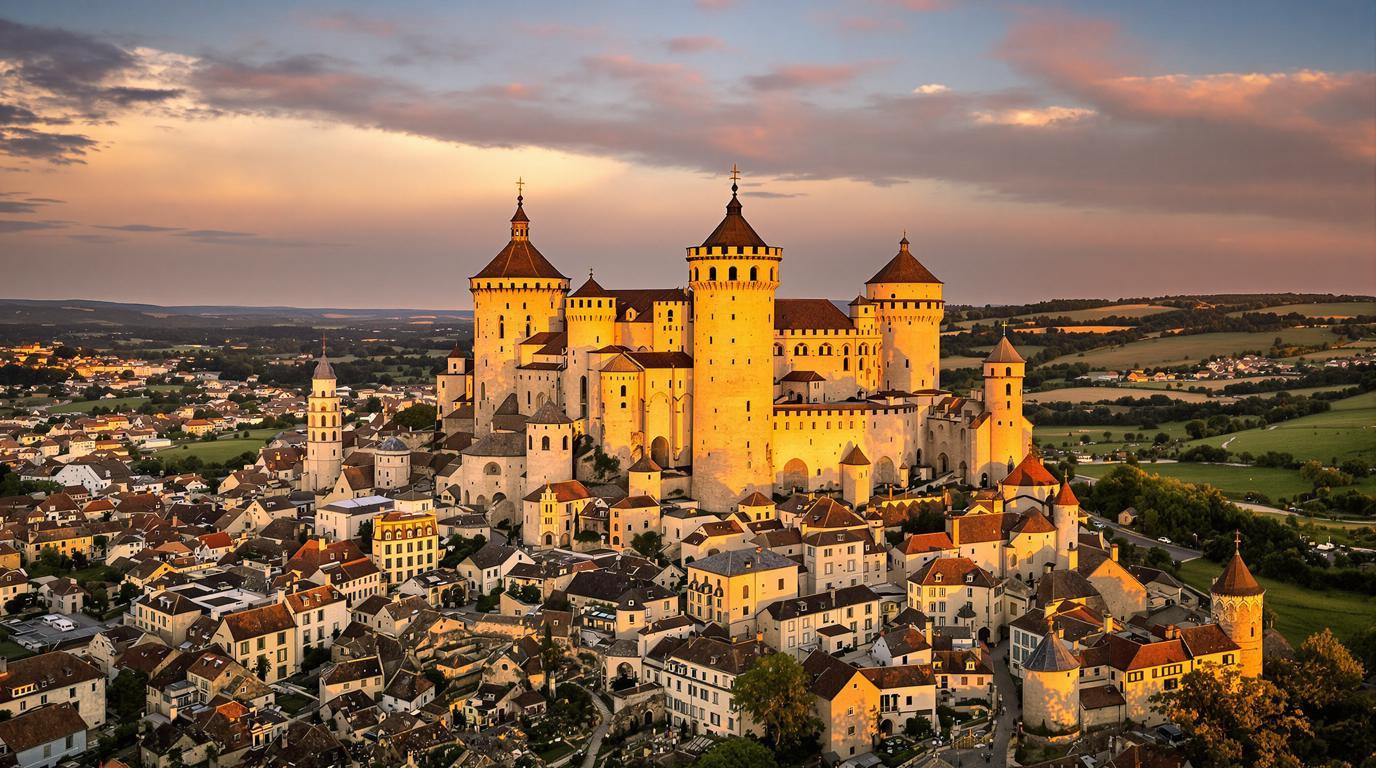France’s “Village of Three” is a medieval masterpiece frozen in time. Curemonte, perched dramatically on a limestone ridge overlooking the verdant valleys of Sourdoire and Maumont, boasts not one but three castles, three churches, and three fountains. This rare distinction has earned it a coveted place among “Les Plus Beaux Villages de France” (The Most Beautiful Villages of France).
A triple crown of medieval splendor
Curemonte’s skyline is defined by its trio of magnificent castles. The 14th-century Château de Saint-Hilaire impresses with its square towers and defensive architecture, while the 15th-century Château de La Johannie showcases the more refined manor style of the period. Completing this royal trio is Château de Plas, a 16th-century marvel distinguished by its elegant round towers that catch the golden light at sunset.
“Each castle tells a different chapter of our village’s history,” explains local historian Marie Dubois. “Together, they form a living timeline of medieval French architecture spanning three centuries.”
Sacred spaces with hidden treasures
The village’s religious heritage is equally impressive. The Romanesque Église Saint-Barthélemy houses an extraordinary painted wooden altarpiece dating from 1672. These religious buildings aren’t just architectural gems but repositories of artistic treasures that have survived centuries of turbulent French history.
A landscape that inspired artists for generations
From its elevated position, Curemonte offers breathtaking panoramas of the surrounding countryside. The 4.5-mile marked hiking trail reveals vistas that seem plucked from a Romantic painting. The undulating hills and patchwork of fields appear much as they did centuries ago, creating a rare window into medieval France that few other places can match.
Those seeking similar dramatic landscapes might appreciate another French village perched atop a 900-meter volcanic plateau, offering equally stunning vistas.
The magical summer nights of Curemonte
Summer evenings in Curemonte transform into enchanting community gatherings. Every Wednesday, the village hosts a night market where visitors can join locals at shared tables, enjoying barbecues under star-filled skies. The Bastille Day celebration brings the entire village together for an open-air feast and traditional dancing that continues well into the night.
“Our night markets aren’t just for tourists—they’re how we’ve celebrated summer for generations,” shares Isabelle Laurent, whose family has lived in Curemonte for over 200 years. “It’s our way of keeping village traditions alive.”
A gastronomic paradise hidden in the hills
The region surrounding Curemonte is a treasure trove for food enthusiasts. Local specialties include the celebrated Rocamadour cheese, decadent foie gras, and walnuts used in everything from oils to liqueurs. The village’s location near other hidden French medieval gems makes it perfect for culinary explorations.
Water features that rival alpine beauty
The village’s three historic fountains once served as essential water sources for residents. Today, they create peaceful spots for reflection throughout Curemonte. Nature lovers might also appreciate this Alpine lake with mist-shrouded shores for similar tranquil water features.
Beyond the medieval walls
Adventurous travelers seeking more remote destinations might consider this ancient Kyrgyz lake at 5,270 feet or perhaps a car-free Seychelles island with hidden granite-enclosed lagoons.
The village that time forgot
What makes Curemonte truly special is how little it has changed over centuries. Walking its narrow, winding streets feels like stepping through a portal to medieval France. The stone houses with their distinctive turrets and crests, the aristocratic residences, and the peaceful squares all contribute to an authentic atmosphere increasingly rare in our modern world.
Curemonte isn’t just a place to visit—it’s a place to experience a France that exists now only in history books and the collective memory of its 215 residents. In this small village, the medieval heart of France continues to beat, waiting for those willing to venture beyond the usual tourist paths.
